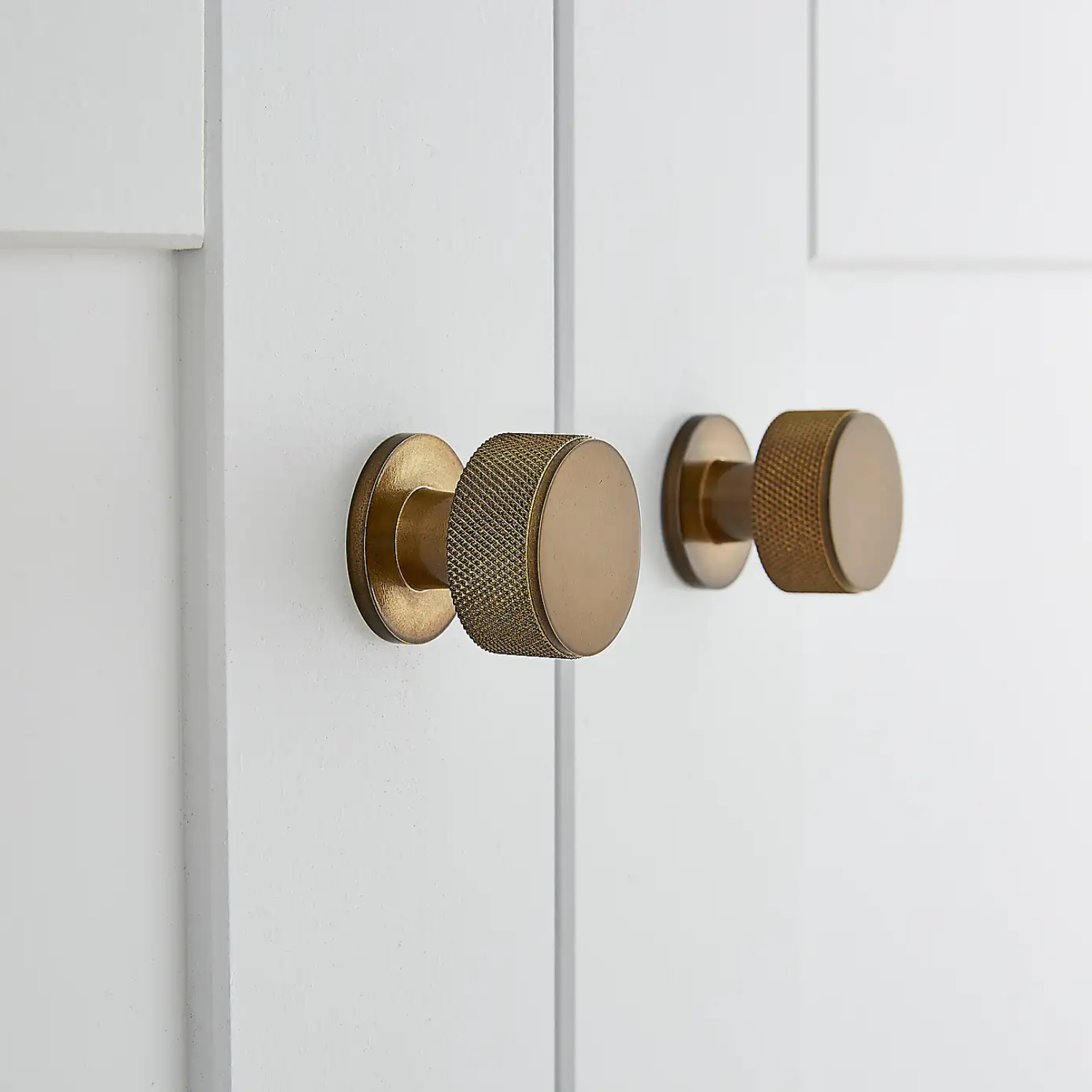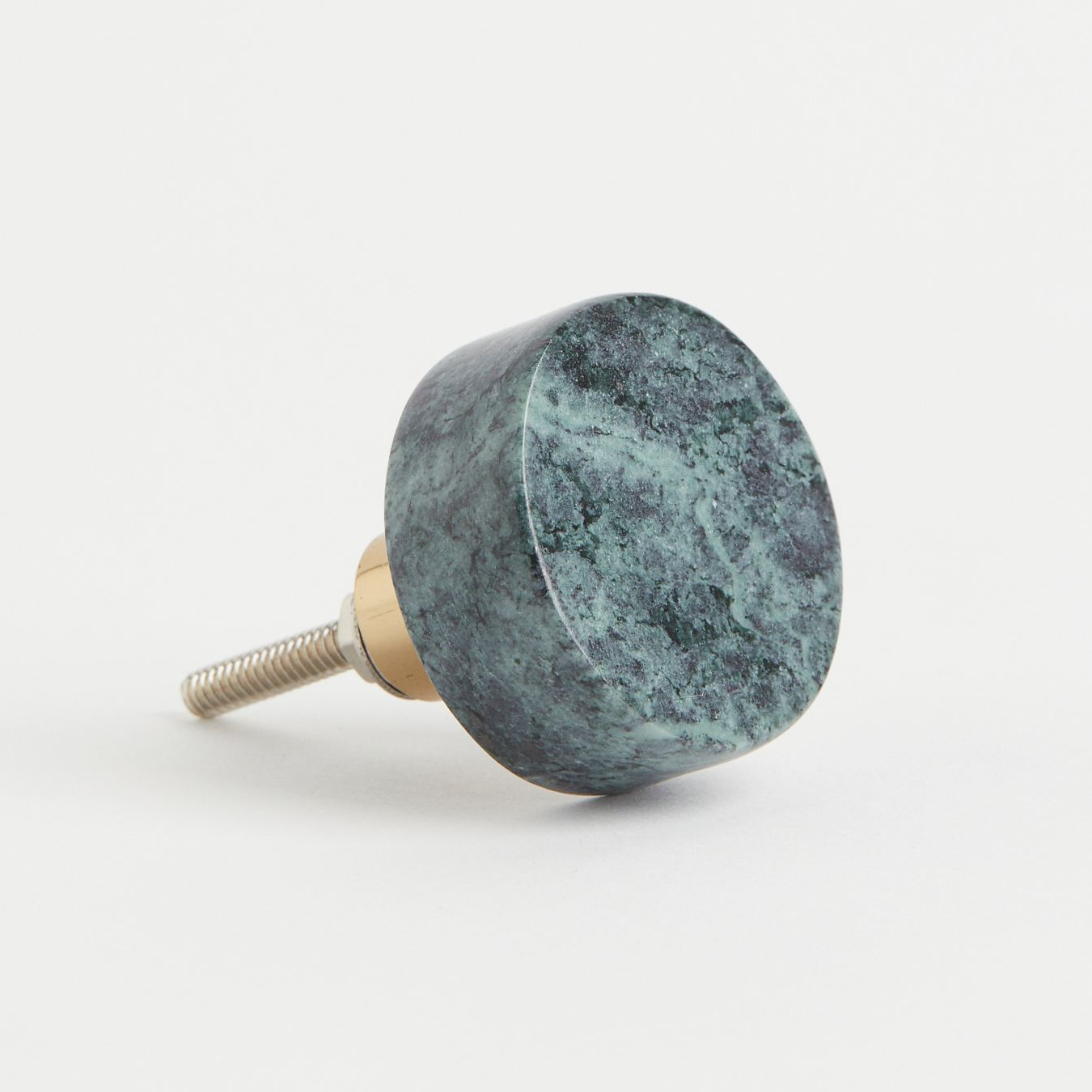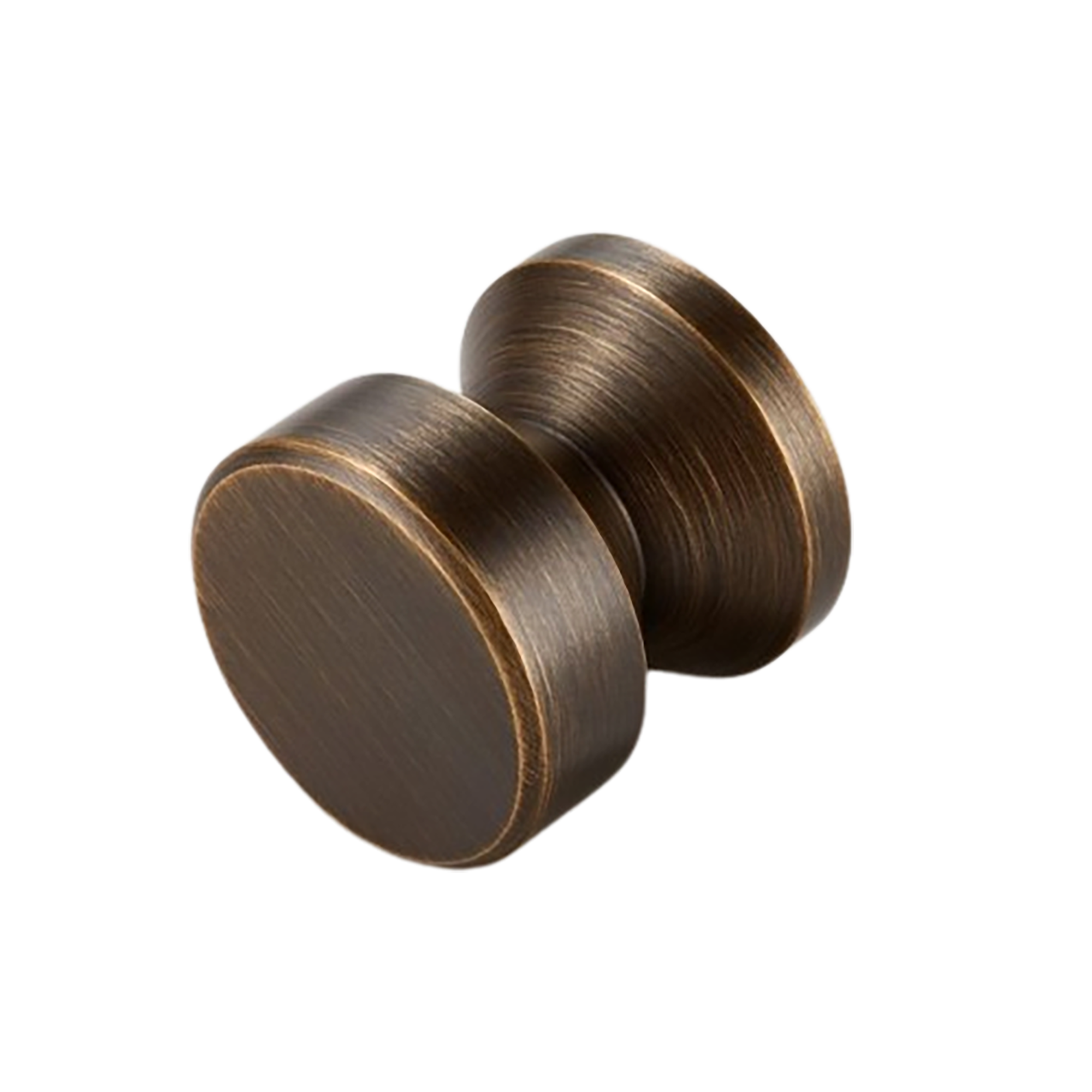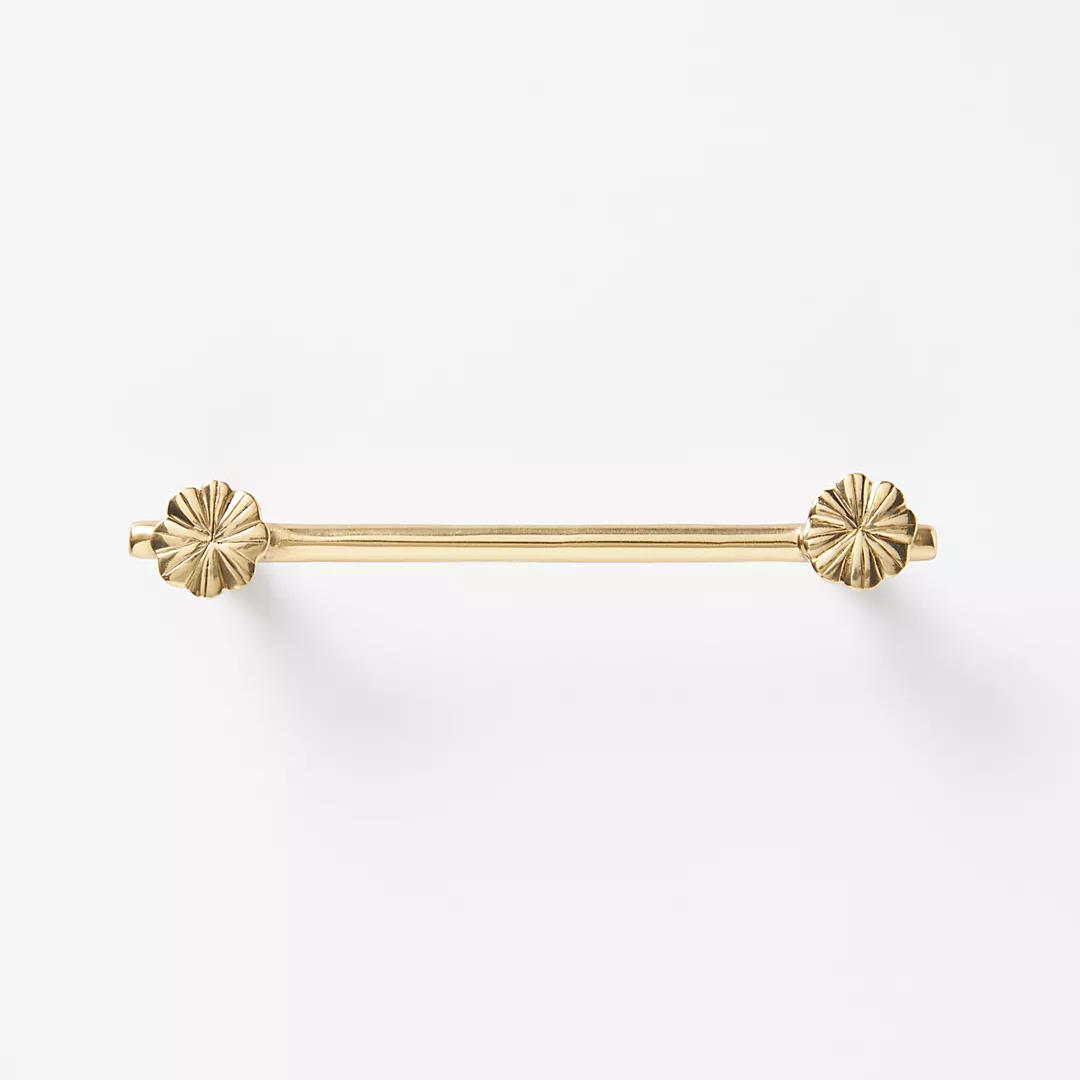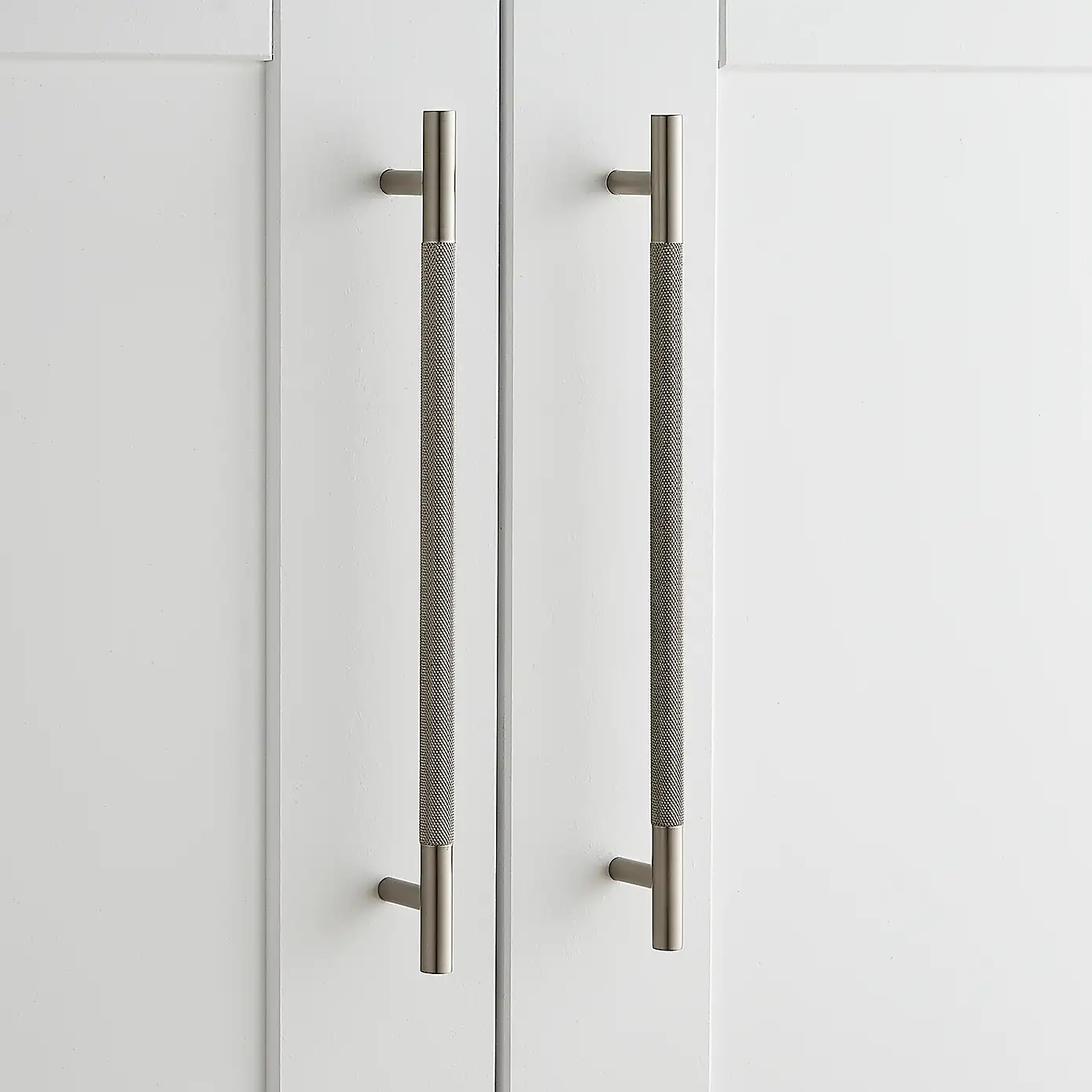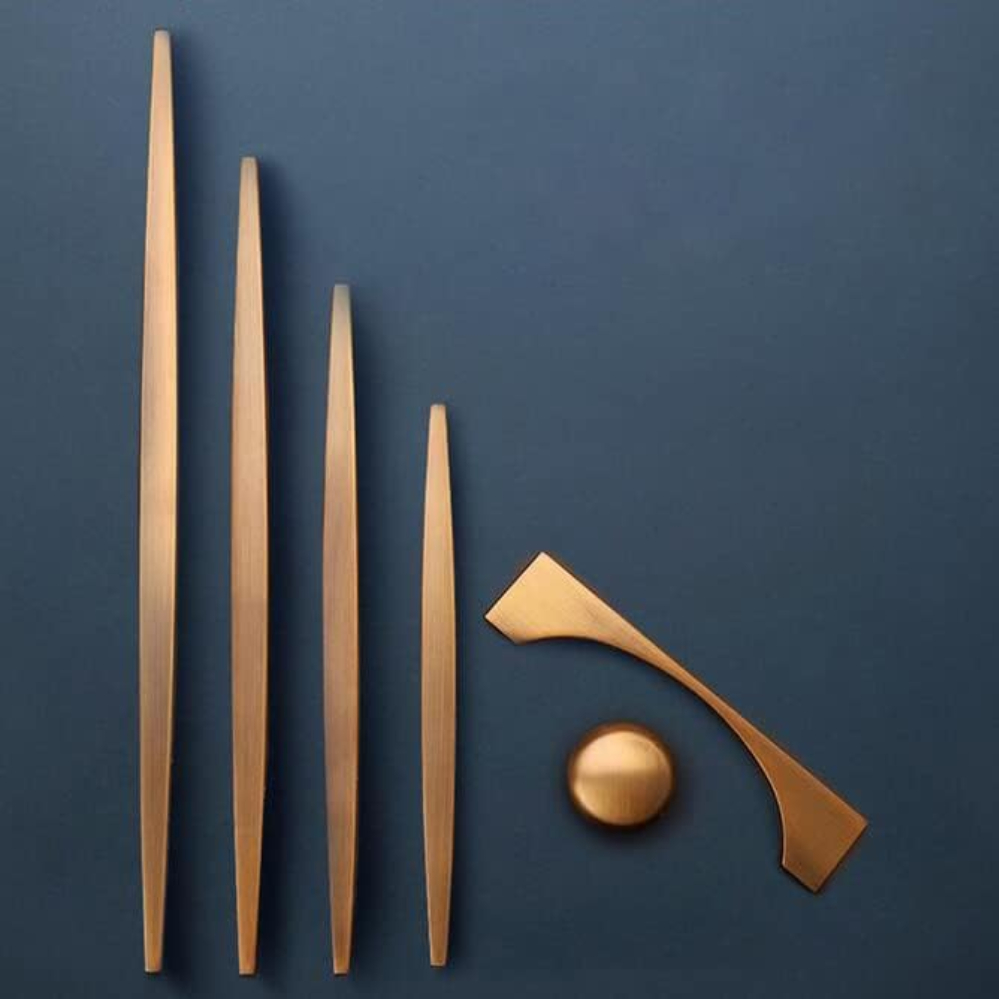Should I use knobs or handles on kitchen cabinets? Kitchen experts weigh in on what's best
From style considerations to practicality for different kitchen cabinets, we've asked the experts whether knobs or handles are best
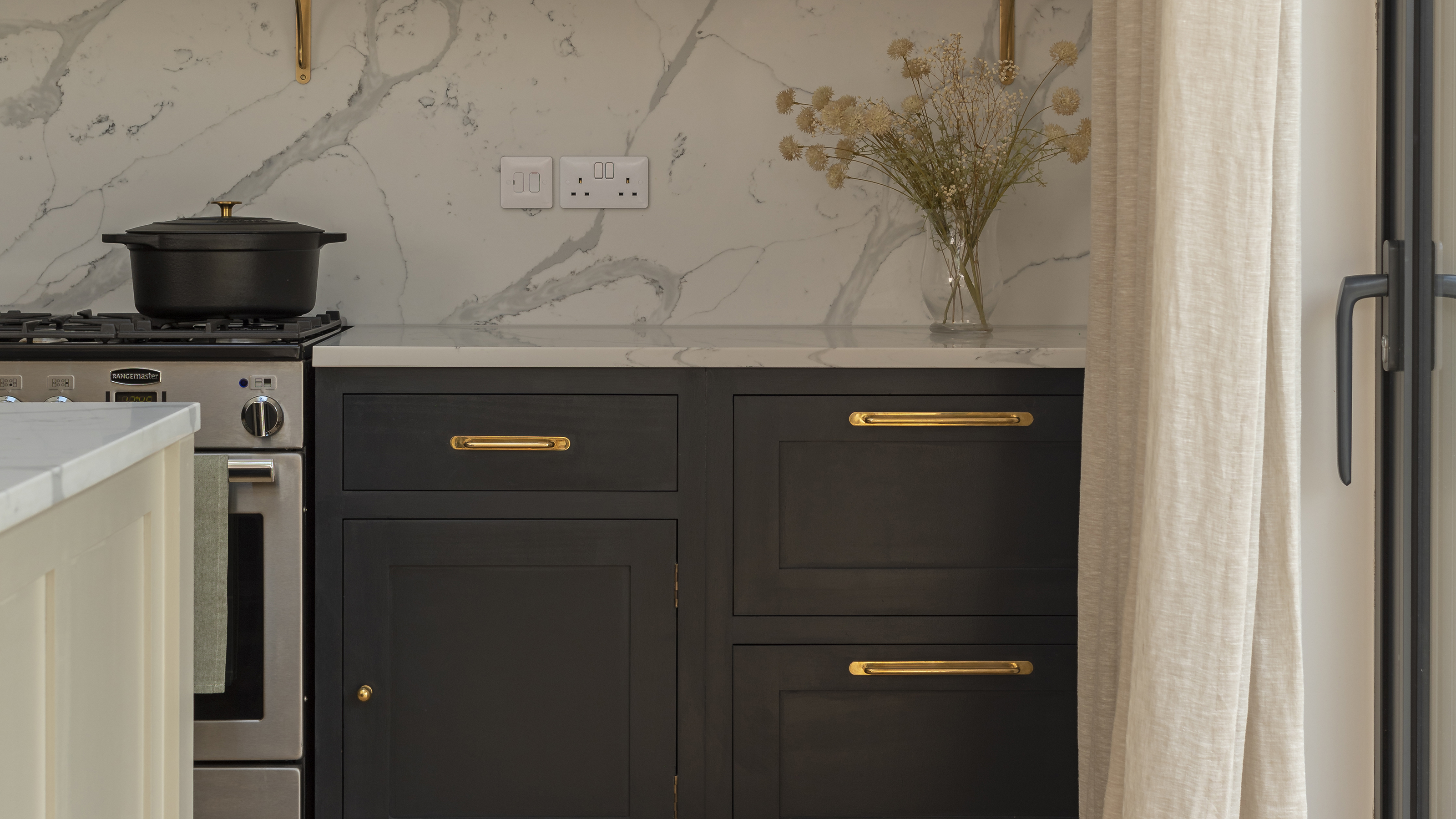

Whether you’re in the process of completely renovating your kitchen or are looking for a relatively inexpensive way to upgrade your existing kitchen cabinets, you may have found yourself asking, ‘Should I use knobs or handles on kitchen cabinets?’
Choosing kitchen hardware can feel like a daunting task as you not only have to consider the type of metal that will work aesthetically but also account for practicality and budget. It's a small design feature that can have a huge impact on not only the look of your kitchen but also how you use it.
So are knobs or handles best for your kitchen cabinets? We've asked kitchen design experts to weigh in on which style works best for different purposes, and where they should be situated.
Should I use knobs or handles on kitchen cabinets?
Kitchen hardware might seem like the cherry on top of your kitchen design, often a choice that you leave until the end, the style of handles or knobs you choose will largely affect how easy your space is to navigate. So, they're an essential component of a functional kitchen.
'Hardware (your kitchen knobs and handles) is often the last decision you make when it comes to your new kitchen, the choice you make can drastically change how your kitchen looks. It is, therefore, important to not underestimate this task and take your time picking the right hardware,’ declares Richard Davonport, managing director at Davonport.
‘Typically, the rule of thumb is to have knobs on cupboards and handles on drawers, but we are seeing this rule being broken a lot more frequently than we previously have as hardware shifts into the realm of being ‘jewellery’ for your kitchen,’ Richard suggests.
Cabinet knob pros
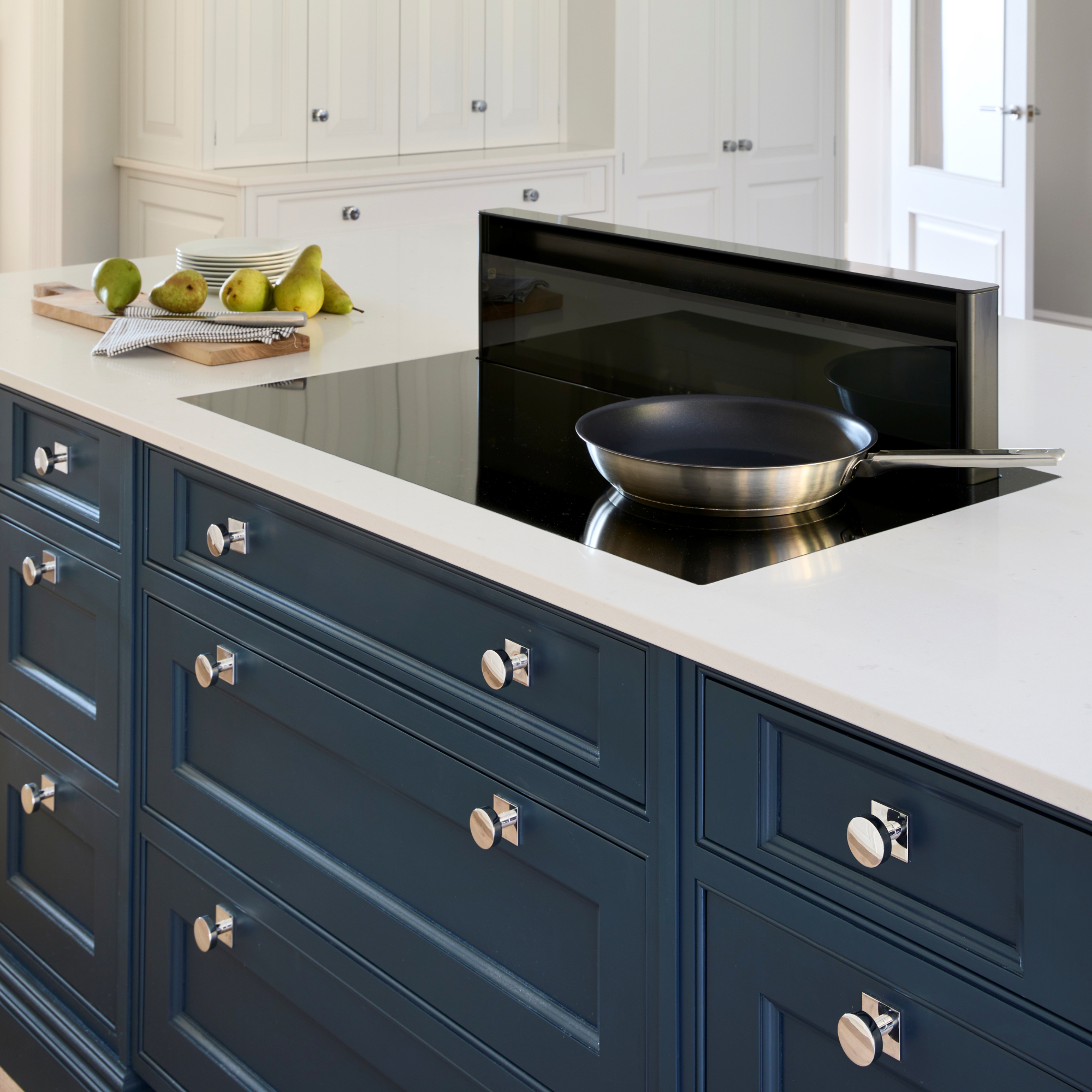
1. Typically more budget friendly
Knobs are a ‘very cost-effective hardware option, making them ideal for budget-conscious kitchen renovations,’ says Jen Nash, head of design at Magnet.
Get the Ideal Home Newsletter
Sign up to our newsletter for style and decor inspiration, house makeovers, project advice and more.
For example, a typical knob costs anywhere from £1, £2 or £3 per knob, with more intricately designed or designer options costing between £70 and £100 per knob. So, depending on your budget, you could kit your entire kitchen out in knobs for a reasonable amount, without compromising on the overall look.
2. More styles and options
‘Available in a wide range of styles, materials, and finishes, door knobs are versatile, timeless, and can enhance the aesthetic of any kitchen,’ argues Jen. You can choose between classic beehive and ceramic designs to antique and knurled types.
Essentially, you’ll be able to find knobs that suit your personal style and overall kitchen design without racking up hundreds and hundreds of pounds to do so.
3. Subtle for small kitchens
‘Doorknobs are typically small and circular, which makes them a great choice for compact spaces as they are less obtrusive and much less likely to catch on clothing,’ says Susie Spence, director of design & innovation at Howdens.
Richard agrees that ‘knobs do tend to be a better choice for smaller kitchens so that they don’t dominate.’
They also don’t take up as much space on the door of the cabinet either, so you’ll be able to see and enjoy the overall look of the cabinet – whether that be a Shaker-style or a clean flat-panel – without them being obstructed by a large or distracting handle.
4. Easier to install

‘As they’re held on with a single screw, knobs are easy to fit and quick to swap whenever you feel like refreshing your cabinets,’ affirms Penelope Jacobs, kitchen design expert at MyJobQuote.co.uk.
If you’re thinking about doing some DIY to your kitchen – whether that be building a new kitchen from scratch, renovating a current one or simply updating your cabinets by switching out the closures to knobs of your choice – installing knobs can be done quickly and with ease and don’t take any expert fitting skills.
Cabinet knob cons

1. Not ideal on heavy cabinet doors
Even though the round shape of a knob ‘can offer an ergonomic grip, some people may find it difficult to open a cabinet using just one or two fingers, especially if the cupboard door is heavy,’ Jamie asserts.
So, if you have a heavy wooden door, a knob would possibly not be the best option in this case.
2. Impractical for those with mobility issues
‘Knobs on drawers are a bit more difficult to operate as you do need to get a good grip to pull,’ explains Stannah’s inclusive design expert, Vaila Morrison, RIBA. ‘And wider drawers would likely need two knobs making it a two-handed operation to open.’
Because of this, if you or someone in your home suffers from arthritis, carpal tunnel syndrome or other mobility issues that affect the hands, knobs may present more of a problem than a solution for your kitchen design.
3. Can feel inadequate for integrated appliances
If you have integrated appliances, such as a dishwasher or fridge freezer, there is generally more weight and resistance when you open one of these doors compared to a typical kitchen cabinet. This means that a knob may not give you enough grip to open them with ease.
Cabinet handle pros

1. Better for grip
As they have a larger surface area, handles – and D handles at that – ‘are by far the easiest style of handle to operate with a reduced grip strength or limited hand function, allowing fingers or thumb to hook through without the need for a full grip,’ Vaila affirms.
‘Handles are excellent for larger pulling-out drawers in islands, especially if they have soft close installed or child safety locks’ William Durrant, owner of Herringbone Kitchens agrees. ‘In addition, if you have floor-to-ceiling cabinet doors they tend to be a little heavier so a long handle is recommended.’
‘Pull handles are also better for drawers as they are better at withstanding the weight inside the drawer and the extra force used when opening them,’ relays Tim Warren, DIY expert at Adkwik.
2. More of a statement
Handles, especially if you choose a larger or more statement design, can ‘create a unique visual statement,’ according to Jamie. From bold colours to bobbin-style options, the fact that they take up more space – both horizontally and vertically – gives you the chance to completely update or transform the look of your kitchen simply by choosing the right handle.
Cabinet handle cons
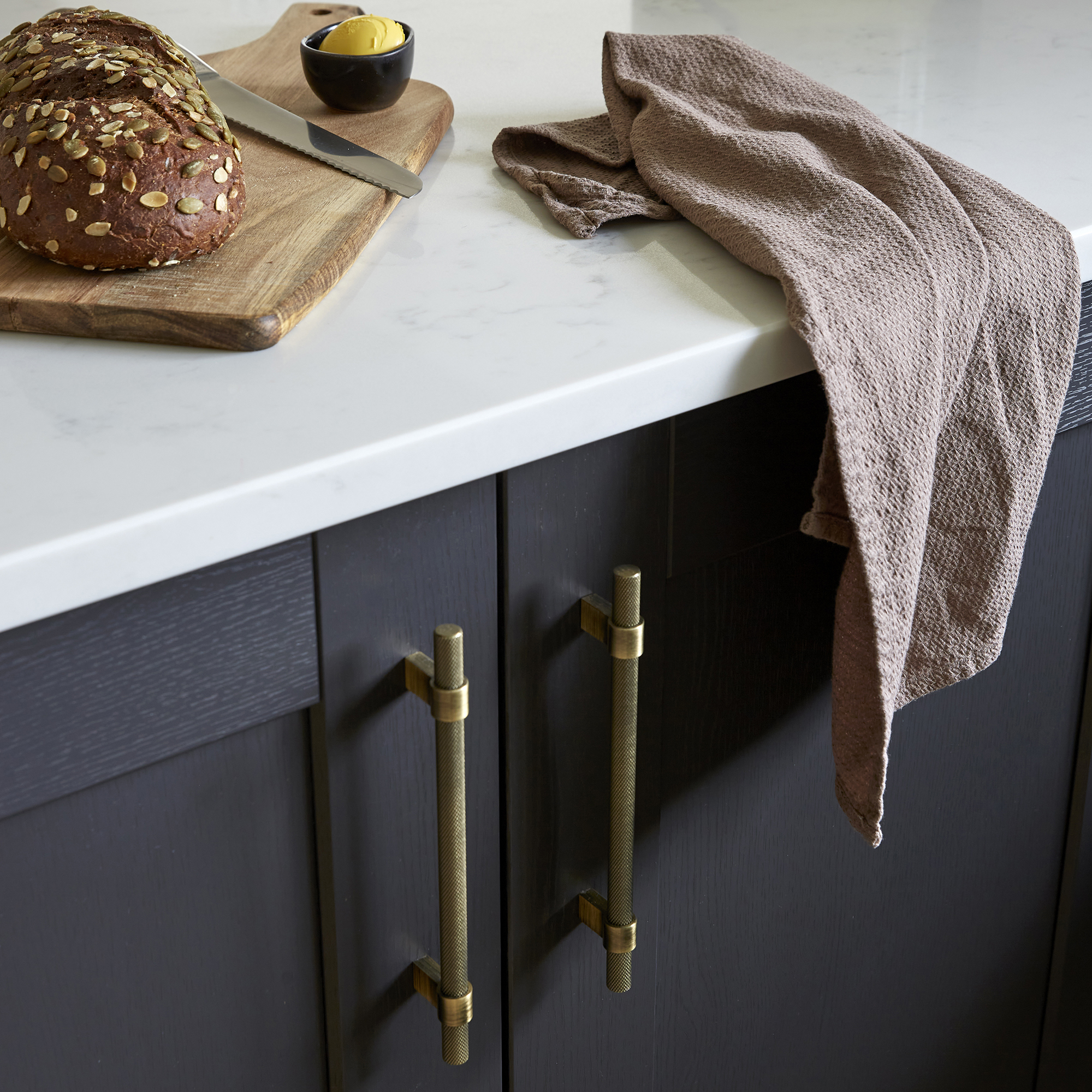
1. Typically more expensive
As handles tend to be much larger than knobs, this difference in size is reflected in the price. Handles can range in price anywhere from £12 to £16 for a pair, all the way to £150 for a set of two.
‘If you have a large number of cabinets and drawers in your kitchen, the cost of pull handles can add up,’ says Molly Chandler, designer at Willis & Stone.
2. Slightly more difficult to install
‘Pull handles also require more effort to install than knobs, as they will need to be marked out and levelled so they are secured straight,’ says Tim, which Jen also echoes. ‘Their intricate installation process requires precise alignment and measurement,’ she explains.
So, if you’re planning on doing some DIY to add handles to your kitchen cabinets, this is something to bear in mind.
Final verdict

Both options have their own merits, and in many kitchens, a combination of the two can work well. But if you have a smaller or more compact kitchen, knobs could be the best choice. While handles are great for larger kitchens, including those with kitchen islands and pantry sections.
‘If you’re still second-guessing your hardware choices, a useful tip is to cut lengths of masking tape to the full length of the cabinet pulls you’re interested in,’ Tom suggests. ‘Then, place the pieces of tape in position on your kitchen cabinets. This will help you gauge how the given size and proportions of the hardware will look on your cabinetry.’
FAQs
Are knobs or pulls better for kitchen cabinets?
The decision between knobs or handles on kitchen cabinets is largely dependent on personal preference and overall priorities. For example, are you more interested in functionality or aesthetics, or a combination of the two.
‘I do see a lot of people making the mistake of using hardware that is too small - especially for a wide drawer,’ says NKBA member Jeanne Chung at Cozy·Stylish·Chic. ‘There are no hard and fast rules as to proportion, but when you have a sizable drawer, you have to have something to grab onto, and a small knob or pull just won't cut it.’
Where do you put knobs on kitchen cabinets?
‘Knobs can be positioned in a few different ways,’ according to Symphony’s design manager, Josie Medved. ‘The most usual is in the top or bottom corner of the door on the side opposite the hinge.’
However, ‘knobs can be positioned anywhere on the edge of the door. It’s quite a nice feature to have the knob handles on a base unit door in the standard position but then have the ones on wall units higher up, for ease of use,’ she adds.
While Jen suggests that for ‘optimal accessibility and aesthetics, fixing door knobs to the top or bottom corner of cabinets is recommended.’ Even though ‘centred placement provides visual balance, it may lack practicality. Placing door knobs at the top or bottom not only enhances accessibility but also contributes to a sleek kitchen design,’ she adds.
How do you put handles on kitchen cabinets?
‘To install handles on kitchen cabinets, place the hardware in the desired location first, and lightly mark out with a pencil where the holes will be,’ says Tim. ‘Use a spirit level to draw a line over these marks to ensure that your handles will be level.’
Take care as you go about doing this and Tim also recommends drilling the holes from the outside of the cabinet – instead of the inside – ‘to prevent damage and chipping.’ You’ll also want to make the hole ever so slightly larger than the screw so that there will be room for adjustment, if need be.
Simply use a screwdriver to tighten the screws by hand once you have attached the handle but be wary of over tightening the screws as this can also cause damage to your kitchen cabinets.
‘Consistently repeat this process for each cabinet, ensuring a well-aligned appearance across all units,’ Jen concludes.

Ellis Cochrane has been a Freelance Contributor for Ideal Home since 2023. Ellis has been writing about homes, interiors and gardens for four years now, with her also contributing to House Beautiful, Country Living, Expert Reviews, Real Homes and Stylist.
-
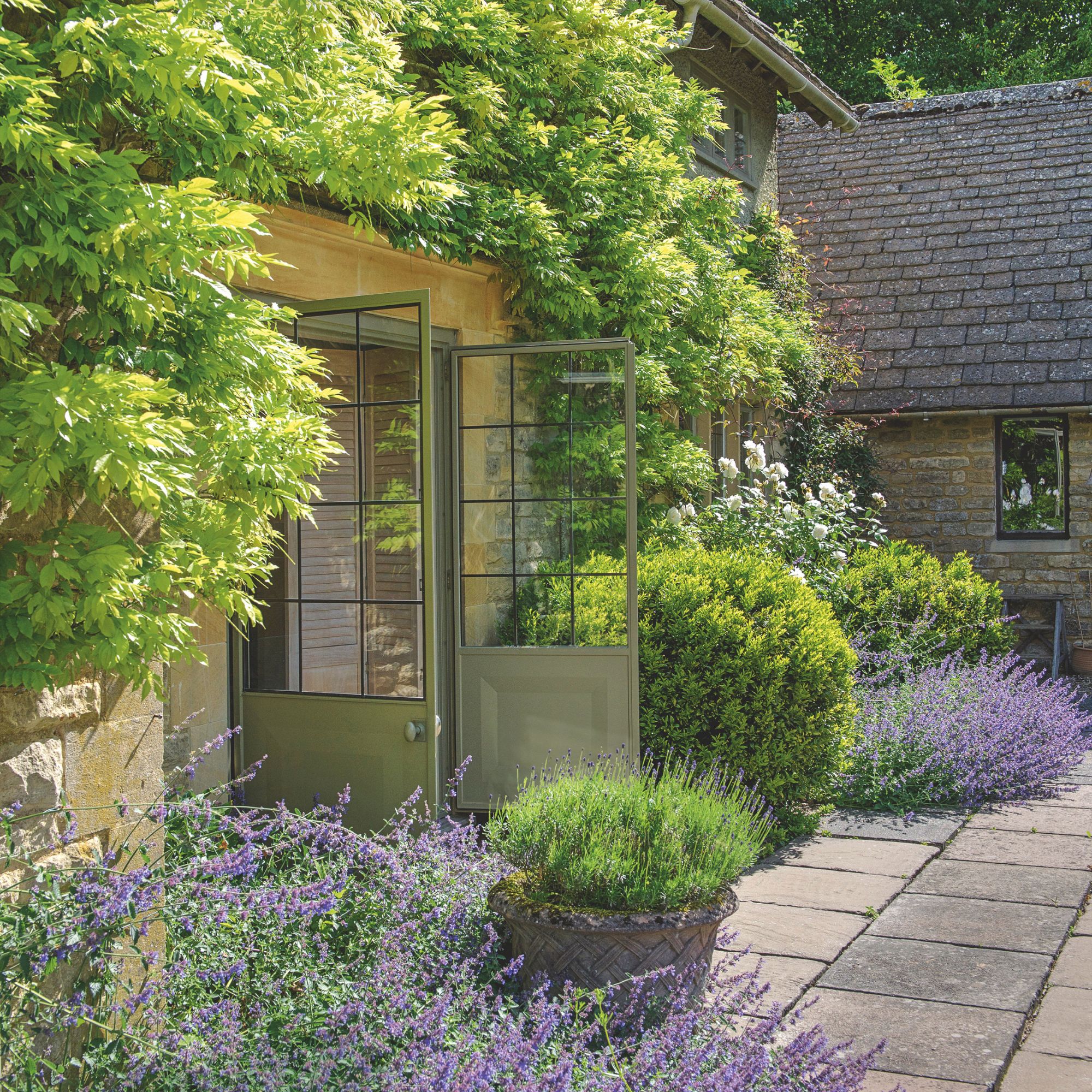 5 fragrant shrubs that will fill your garden with a gorgeous scent this summer
5 fragrant shrubs that will fill your garden with a gorgeous scent this summerAdd an extra dimension to your outdoor space with these scented shrubs
By Kezia Reynolds
-
 Should your front door colour match your hallway? Interior experts reveal 3 reasons why it should (and 3 reasons it shouldn't)
Should your front door colour match your hallway? Interior experts reveal 3 reasons why it should (and 3 reasons it shouldn't)Are you team matching or contrasting?
By Ellis Cochrane
-
 This £200 limited-time discount makes this Dyson vacuum cheaper than I’ve ever seen it - run don’t walk to Argos for this bargain
This £200 limited-time discount makes this Dyson vacuum cheaper than I’ve ever seen it - run don’t walk to Argos for this bargainIt's the most affordable Dyson on the market right now
By Lauren Bradbury
